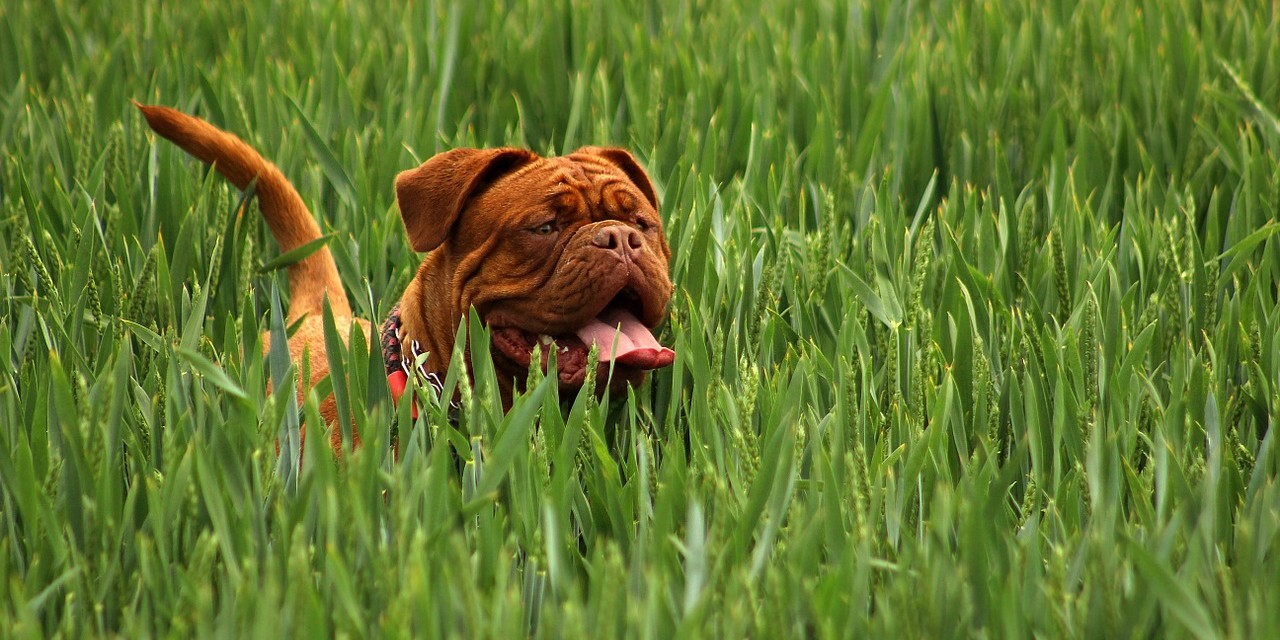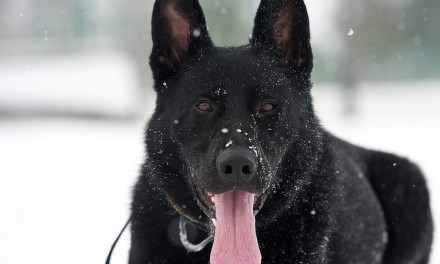Part 2: Training with a marker
So now that your clicker or marker-word has been charged up and given meaning it’s time to start training with it. There are two techniques to marker training: free-shaping and luring. For part 2 we are going to talk about luring due to its simplicity.
To begin, start with a simple behavior like “sit”. Even if your dog has already learned it you can strengthen the behavior further following these steps. When we are teaching any behavior do not being using the verbal cue. It’s not impossible to start with however the word is learned much faster if you hold off on saying “sit” for a while.
Step 1: The Lure into the Visual Cue
To lure, you are going to take a treat from your training pouch and hold it to the dogs nose. Then in an upward motion, you are going to slowly raise the treat up and over their head just a tiny bit. This will cause your dog to plop her butt on the floor. The moment her butt touches the floor you are going to “mark” and then give her the treat. Take a couple steps so she follows and repeat: lure, “mark”, treat. As you continue to do this, begin to shape your hand into the visual signal you want to use for the behavior. Hold the treat behind your finger tips with your thumb, this will naturally cup your hand and keep the treat away from her mouth while you lure. This rounded hand gesture with your palm towards you is going to become your visual cue for “sit”.
As we continue to repeat this process over and over, we want to do what’s called “fading the lure”. To do this, after your dog is reliably sitting with the visual signal and hidden treat, reach your hand in your pouch like you’re going to get a treat but don’t grab any. Immediately use the hand signal again pretending you have a treat in your fingers. The smell of your fingers will inevitably trick your dog to follow the hand into the sit. Once she sits, “mark” and reach into your pouch to grab a treat and reward her. After this you are going to start pulling the visual cue away from her nose, each time getting a centimeter further away. It won’t be long before you will be able to cup your hand in front of you without leaning down to your dog to produce a sit.
At this point take a break, your dog just did some major hard-wiring in her brain and a play session is the best thing you can do now. Reward her hard work by grabbing her favorite toy and letting her go nuts. It’s quite common to see puppies and dogs start leaping out of their fur when they see the clicker and training pouch come out for training because everything around the training is fun!
After she’s blown off steam let her take a nap. It’s important to always stop a training session before Fido wants to. Plus there’s some incredible research going on with data indicating that certain brain waves during sleep (theta waves) actually cause memories to consolidate and be moved into long-term storage.
When you return to training take a couple steps back. Do 1 or 2 lures before switching back to just the hand signal. It always helps in a training session to give the dog a couple easy repetitions to get the dopamine flowing. After you have got the visual cue working with about 80% consistency, it’s time to add the aural cue.
Step 2: Adding the Verbal Cue
Now you get to say it, “sit!” But don’t present the visual cue yet. Just say the word and be patient. Doing both at the same time is called “blocking” because the brain processes one stimulus at a time better than multiple. Now it’s highly possible that enough reinforcement for the behavior has happened that the dog may actually sit right away. However, typically you will say the verbal cue and your dog will just stare looking for more information. Count to 4 seconds and if she hasn’t sat down yet then pull out the visual cue. She sits: “mark” and reward. Repeat: “Sit”, wait 4, visual cue, “mark” and reward. The reason we wait a couple seconds is it takes time for Fido to process the word. Let the word rattle around in her brain and see if she can offer the behavior without the visual cue. Be consistent and continue with the verbal cue, wait, visual cue, “mark” and reward and it won’t be long before you have taught Fido to sit to both a verbal cue and a visual cue.
Here’s a recap:
1) Lure > “Mark” > Reward
2) Fake Lure > “Mark” > Reward
3) Visual Cue > “Mark” > Reward
4) Verbal Cue > Wait > Visual Cue > “Mark” > Reward
5) Verbal Cue > “Mark” > Reward
Important reminders:
- Say it
- Show it
- “Mark it”
Keep training sessions short – 10 to 15 minutes max!
Keep it fun – If Fido stars to slow down or show signs of frustration then take a step back, ask for a couple easy commands and take a break or make it easier for Fido to accomplish. Success builds upon success. Try not to have more then 3 failures for every 10 cues. An efficient trainers advances with about 75% success with the end product working towards 100%.
In part 3 we will move to the most advanced form of marker training: free-shaping!
In training,
The Pawsitive Packleader ~ Seattle Dog Training















